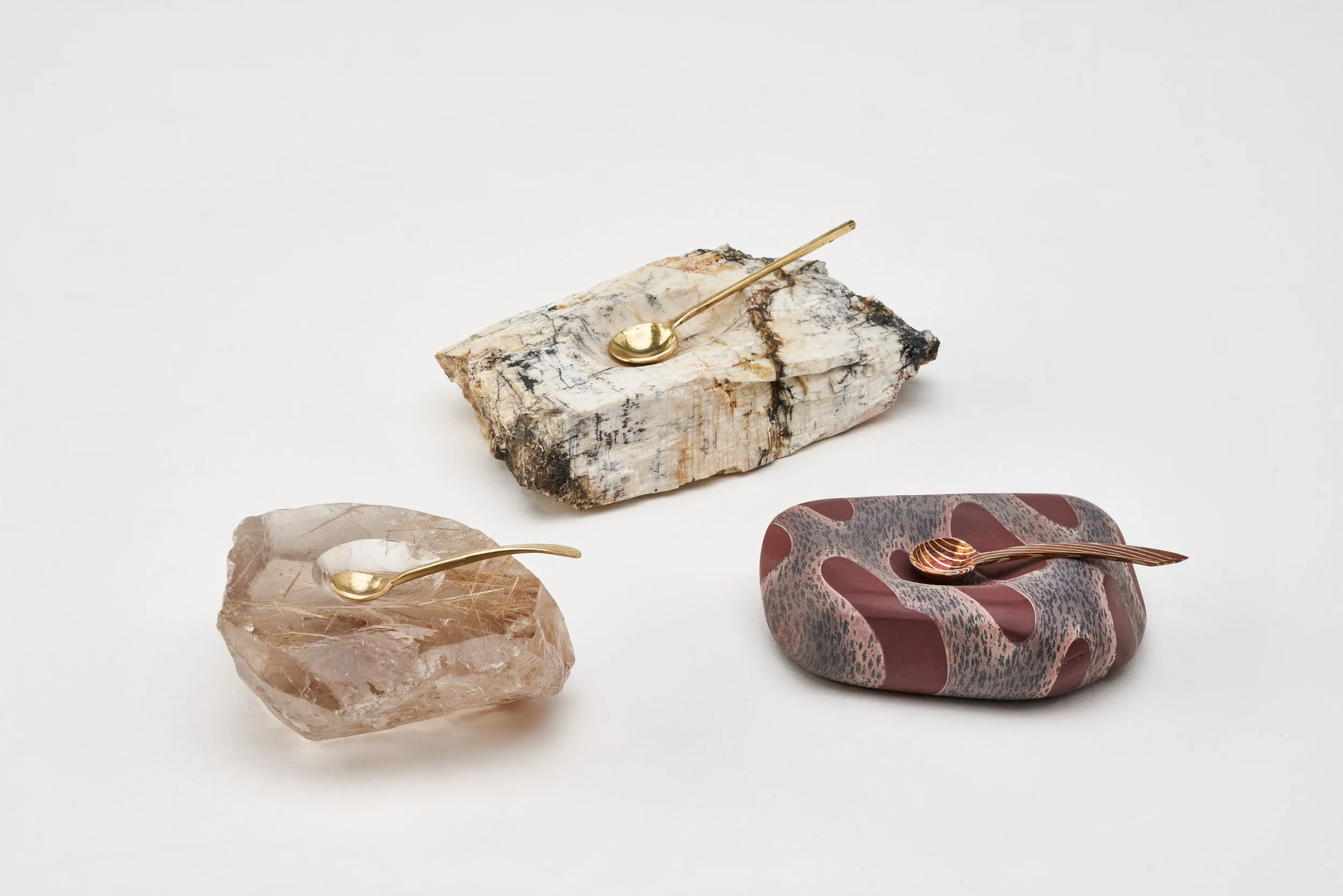Spice dishes carved in rock with precious metal Spoons
These small dishes are carved from rock with tiny metal spoons.
Rutilited Quartz dish with 18ct yellow gold spoon forged,50x54x22mm
Zebra Stone spice dish, WA Kimberly Mokume Gane* Spoon, forged, 60x47x17mm
Scapolite dish from Cowell SA, 18ct gold spoon, 59x57x17mm
Rutilated quartz is a variety of quartz which contains acicular (needle-like) inclusions of rutile. These inclusions mostly look golden, but they also can look silver, copper red or deep black. They can be distributed randomly or in bundles, which sometimes are arranged star-like, and they can be sparse or dense enough to make the quartz body nearly opaque. While otherwise inclusions often reduce the value of a crystal, rutilated quartz is valued for the quality and beauty of these inclusions
Zebra Stone This distinctive reddish-brown and white-banded sedimentary rock from the east Kimberley of Western Australia is called ‘zebra rock’ or ‘zebra stone’.
Composed essentially of small particles of quartz and ‘sericite’ (fine-grained white mica), zebra rock also contains the minerals kaolinite, dickite and alunite.
Known localities of the zebra rock lie close to the Ord River where the rock forms lenses and seams within the Johnny Cake Shale Member of the Ranford Formation, which formed during the late Precambrian (around 670 million years ago). Some seams of zebra rock are continuous over many kilometres.
The colour banding of zebra rock probably formed by the rhythmic precipitation of iron oxide (hematite) rich bands during the alteration of the rock by percolating fluids (fluids migrating through the rock).
*Mokume-gane (木目金) is a Japanese metalworking procedure which produces a mixed-metal laminate with distinctive layered patterns; the term is also used to refer to the resulting laminate itself. The term mokume-gane translates closely to "wood grain metal" or "wood eye metal" and describes the way metal takes on the appearance of natural wood grain Mokume-gane fuses several layers of differently coloured precious metals together to form a sandwich of alloys called a "billet." The billet is then manipulated in such a way that a pattern resembling wood grain emerges over its surface. Numerous ways of working mokume-gane create diverse patterns. Once the metal has been rolled into a sheet or bar, several techniques are used to produce a range of effects.
